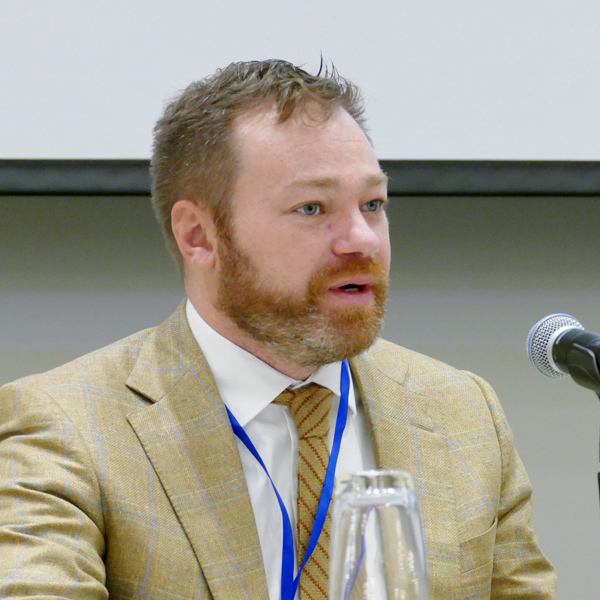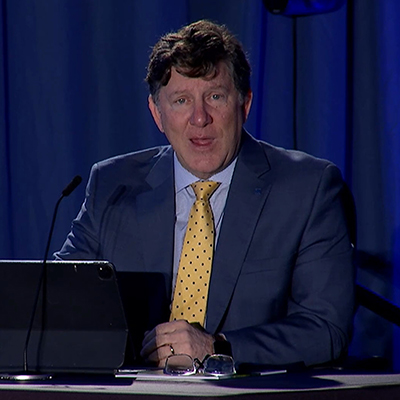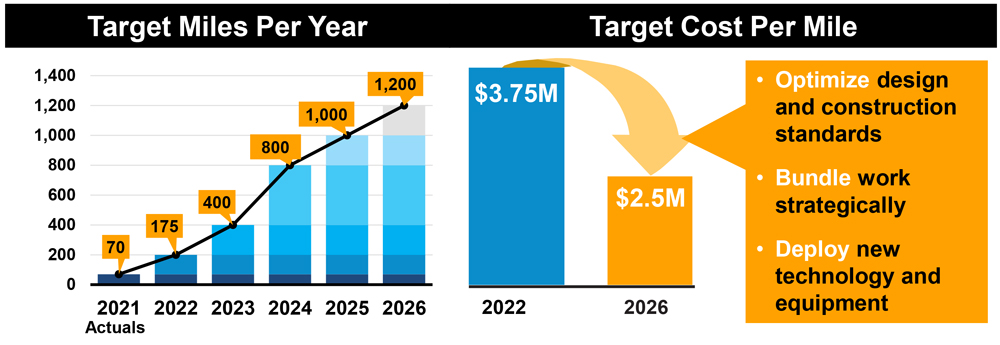WASHINGTON — Former U.S. Energy Secretary Ernest Moniz on Friday called for policy changes to increase private capital for advanced nuclear reactors and “regional” climate solutions driven by innovations in hydrogen production and carbon capture.
Moniz, now CEO of the Energy Futures Initiative, made the remarks during a wide-ranging interview with Patrick Woodcock, commissioner of the Massachusetts Department of Energy Resources, at the National Association of State Energy Officials’ (NASEO) Energy Policy Outlook conference.
DOE Reorganizes to Maximize Infrastructure Spending
Woodcock began by asking Moniz’s opinion of the DOE reorganization announced Wednesday, which the department said was needed to implement the clean energy investments in the Infrastructure Investment and Jobs Act (IIJA) and the Energy Act of 2020. The legislation will fund $62 billion in clean energy demonstration and deployment programs and more than triples DOE’s annual funding for energy programs.
 Patrick Woodcock, commissioner of the Massachusetts Department of Energy Resources | © RTO Insider LLC
Patrick Woodcock, commissioner of the Massachusetts Department of Energy Resources | © RTO Insider LLCThe new organizational chart creates two undersecretaries, one responsible for fundamental science and clean energy innovation and the other focused on deploying clean energy infrastructure.
The department said the realignment reflected the recommendations made in January by the American Energy Innovation Council, a group of CEOs and technology and labor leaders, who suggested DOE unify the leadership of its deployment programs. “The structure also encourages cross-program collaboration and coordination across the full commercialization spectrum,” DOE said.
The deployment efforts will be helmed by the undersecretary for infrastructure (formerly undersecretary for energy), with teams specializing in infrastructure financing and project development and management. It will include DOE’s Loan Programs Office, as well as the Office of Indian Energy; Office of Clean Energy Demonstration; Office of Cybersecurity, Energy Security and Emergency Response (CESER); and the Federal Energy Management Program. It will also house three new offices: the Grid Infrastructure Office to modernize and upgrade the electric grid and deploy cheaper, cleaner power; the State and Community Energy Program, to work with states and localities on decarbonization solutions; and the Office of Manufacturing and Energy Supply Chains, to ensure “a clean, resilient, domestic supply chain.” (See Industry Welcomes DOE’s Better Grid Initiative.)
NASEO General Counsel Jeff Genzer told the conference that Geraldine L. Richmond, who was undersecretary of science and energy, will be the undersecretary for science and innovation. “We assume Kathleen Hogan [principal deputy undersecretary for infrastructure] will be the principal undersecretary for [the infrastructure] office and possibly nominated for permanent undersecretary, but we do not know,” he said.
The reorganization follows DOE’s January launch of the Clean Energy Corps, to be staffed by existing staff from a dozen offices and 1,000 new workers.
Reorganization is ‘Essential’
Moniz said the reorganization was “essential,” noting that his own reshuffling in response to the American Recovery and Reinvestment Act involved less than half as much funding as the IIJA. “The infrastructure spending itself is going to require just an enormous lift to get that funding out there,” he said.

As for the new hires, Moniz said “there has to be a sufficient cadre in this 1,000 people who understand how government works. You can bring in 1,000 project managers; if they don’t have at least sufficient government experience in that group, it’s not going to work. So it’s a big, big job. I admire the idea of trying to move on where they can quickly, like EV charging, for example. But some of it’s going to take a while.” (See States to Get $615 Million for EV Charging from IIJA Funds.)
‘All of the Above’ for Carbon Reduction
Moniz said he favors an “all of the above approach” to carbon reductions. “We cannot afford to put aside, for emotional or ideological reasons, any tool that can … help us reach our goals,” he said.
But he said different technologies will be used in different regions. “The fundamental principle in how we approach climate is that solutions are regional. They are regional globally, and they are regional within our country,” he said.
For example, he said, hydrogen from natural gas with carbon capture and sequestration, known as “blue” hydrogen, “is going to be part of the solution” in areas with the right geology.
“Take a place like the Ohio River Valley — West Virginia, southwestern Pennsylvania and eastern Ohio — the tools are there for blue hydrogen, at least for quite a while. Whereas other places, the Carolinas, for example … that’s a pure green hydrogen [location],” referring to hydrogen produced with renewable energy.
Getting Advanced Nuclear ‘Over the Finish Line’
Moniz said policymakers need to address barriers to getting large amounts of private capital into carbon-free energy such as advanced nuclear. Despite having bipartisan support, Moniz said advanced nuclear power is an example of “a mismatch between the private sector funds that are available for investment and investable projects with … conventional returns.”
Investors are spooked by the “very unsettled” policy and regulatory world around the energy transition, Moniz said.
“I think what we’ve seen — and we saw it in Glasgow — there’s been a dramatic shift among many of the environmental groups in terms of supporting nuclear for its carbon-free characteristics. However, if you listen carefully, what you hear is that commitment being applied to existing nuclear plants, and not necessarily to building a new generation of nuclear plants.”
Yet, he said, “we have never seen the amount of innovation in the nuclear space that we have seen these last years,” citing small modular reactors and molten salt reactors.
“We’re never going to get there without the investment that puts some of these over the finish line and demonstrates [both] their economic performance and scheduled performance — cost performance. So it’s a chicken-and-egg” situation, he said.
“A major part of the economic proposition” for SMRs, Moniz noted, is that the nuclear part of the reactor “can be built in a factory environment, with all the quality assurance and the economic learning that goes on in a factory environment, versus the in-field construction that we know has led to tremendous … schedule problems. But you can’t … pay for the tooling for a factory unless you have an order book. And building one [reactor] isn’t enough.”
‘Stranded’ Workers, Innovation Hubs
Moniz also had observations on other issues, including:
Stranded Workers: Avoiding “stranded workers and stranded communities” is critical to political support for addressing climate change, Moniz said. “If we don’t do all that we can to avoid stranded workers and communities, all we’re going to have is more and more political headwinds.”
LNG and Resilient Supply Chains: “We have not done a very good job of [ensuring resilient supply chains] as global trade has developed. We have not put reserves in supply chains of many things, including metals and minerals.” One bright spot, he said, is LNG. “Because you don’t have a pipe that goes from point A to point B, you have more flexibility for spot market formation,” he said. While the U.S. is near full capacity for export given current infrastructure (about 10 Bcfd), “there is a new wave of construction going on … and I think we will get to at least 15, if not 20 Bcfd of export. And that will be an enormous contribution in the global gas market,” he said.
Innovation Hubs: In addition to supporting regional hydrogen hubs, Moniz said the government could promote regional innovation hubs. “I’ve always felt that that is a very important direction to pursue. Because … it’s regionally where the focus is on needs. And every part of the country has got some integration resources but has very, very different needs. And I think that having a substantial part of federal funding go through these regional infrastructure hubs would be a big plus.”
Carbon Dioxide Removal: “For a long time, there were those who opposed carbon dioxide removal. … Now, my concern is a number of people are going overboard; they’re saying, ‘we’re going to need about 20% of the solution to come from removing CO2 from the atmosphere and the oceans.’ Twenty percent is a huge number; that is an incredibly massive business that would be created. We’re going to need a lot; can we make that much? It’s going to be tough. We’re going to need a lot of innovation to get there.”

